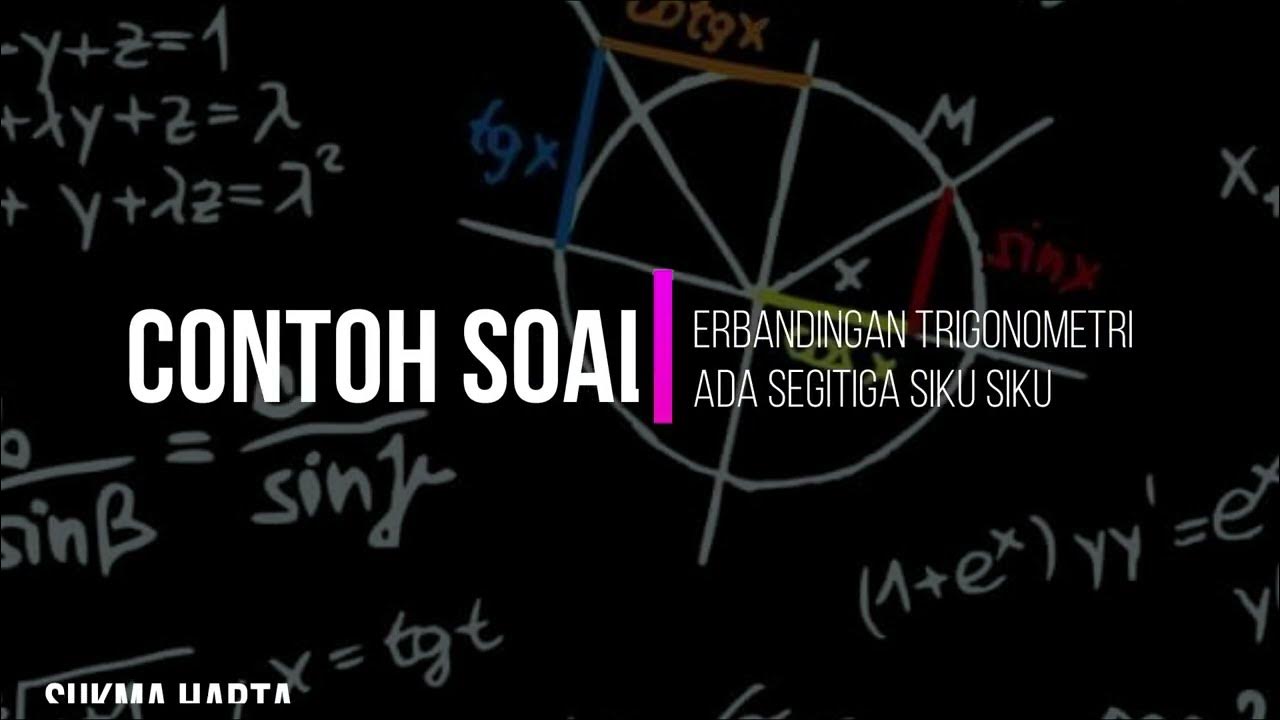Angles of Triangle: Sum of Interior Angles and Exterior Angle Theorem by @MathTeacherGon
Summary
TLDRIn this video, Smita Charagon explains how to find missing angles in different types of triangles. She covers key concepts like the angle sum property of triangles (where the sum of interior angles equals 180°), properties of isosceles triangles (where congruent sides have congruent opposite angles), and the exterior angle theorem. Smita demonstrates how to apply these concepts with step-by-step examples, guiding viewers through solving for missing angles in various triangles. This lesson is perfect for students learning geometry and offers clear, easy-to-understand solutions.
Takeaways
- 😀 The sum of the angles in any triangle is always 180°.
- 😀 In a triangle, to find a missing angle, subtract the sum of the known angles from 180°.
- 😀 For an isosceles triangle, the angles opposite the equal sides are congruent.
- 😀 To solve for missing angles in isosceles triangles, subtract the sum of the known angles from 180°.
- 😀 The exterior angle theorem states that an exterior angle of a triangle is equal to the sum of the two remote interior angles.
- 😀 For linear pairs, the two angles formed by a straight line add up to 180°.
- 😀 Use the sum of the given angles to find the missing angle in a general triangle.
- 😀 In isosceles triangles, if two sides are equal, the angles opposite them are also equal.
- 😀 The exterior angle of a triangle is found by adding the two non-adjacent interior angles.
- 😀 When solving for missing angles in triangles, basic operations like addition and subtraction are key to the process.
Q & A
What is the main concept used to solve for missing angles in triangles?
-The main concept used is that the sum of the three interior angles of any triangle is always 180 degrees.
How do you find the missing angle in Triangle 1 where the given angles are 70° and 35°?
-To find the missing angle (X), add 70° and 35°, which equals 105°. Then subtract this from 180° to get X = 75°.
What property is used to solve for the missing angle in an isosceles triangle?
-In an isosceles triangle, the property used is that the angles opposite congruent sides are equal. In the given case, both angles opposite the congruent sides are 68°.
How do you calculate the missing angle in Triangle 2, which is an isosceles triangle with angles of 68° and 68°?
-To find the missing angle, subtract the sum of the two given angles (68° + 68° = 136°) from 180°. The missing angle is 44°.
What is the Exterior Angle Theorem and how is it applied in Triangle 3?
-The Exterior Angle Theorem states that an exterior angle is equal to the sum of the two non-adjacent interior angles. In Triangle 3, the exterior angle is found by adding 80° and 39°, giving 127°.
How do you find the missing angle X in Triangle 3 using the Exterior Angle Theorem?
-Add the given angles 80° and 39° to find the exterior angle X, which equals 127°.
What is a linear pair and how is it used to find the angle Y in Triangle 4?
-A linear pair consists of two adjacent angles that sum up to 180°. In Triangle 4, since the angle is 120°, the missing angle Y is found by subtracting 120° from 180°, resulting in Y = 60°.
What method is used to solve for the missing angle X in Triangle 4 after calculating Y?
-After finding Y, the missing angle X is calculated by adding the angles 60° and 50° to find their sum (110°), then subtracting this from 180°, resulting in X = 70°.
Why is it important to understand the properties of different triangles when solving for missing angles?
-Understanding triangle properties, such as the sum of angles in a triangle, isosceles triangle properties, and the Exterior Angle Theorem, helps in accurately solving for missing angles and ensures efficient problem-solving.
What are some real-life applications of the concepts explained in the video?
-These concepts are used in various fields, including architecture, engineering, and design, where precise measurements of angles and geometry are crucial for constructing buildings, bridges, and other structures.
Outlines

This section is available to paid users only. Please upgrade to access this part.
Upgrade NowMindmap

This section is available to paid users only. Please upgrade to access this part.
Upgrade NowKeywords

This section is available to paid users only. Please upgrade to access this part.
Upgrade NowHighlights

This section is available to paid users only. Please upgrade to access this part.
Upgrade NowTranscripts

This section is available to paid users only. Please upgrade to access this part.
Upgrade Now5.0 / 5 (0 votes)





